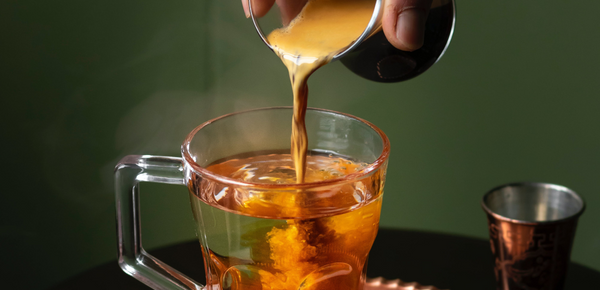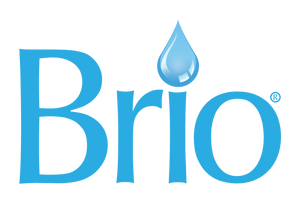“For brewed coffee, about 98% of the coffee is actually made up of water. Tap water can vary massively by location and season, so using filtered water can help ensure consistency in extraction, flavor and ultimately cup quality.”
- Josh Brown, Coffee Consultant and Specialty Coffee Association Head Judge

The world of coffee is a nuanced and intricate realm where every detail matters. From the grind size to the brewing method, coffee enthusiasts tirelessly seek elusive perfection in their cup. Does the perfect cup of coffee, however, really demand years of training and the use of a high-pressure machine the size and price of a second-hand car? Or can you beat baristas at their own game at home?
People will insist that brewing coffee is all about the gadgets, but the often-overlooked fact is that it’s really about the ingredients. One element that plays a pivotal role is water quality. Here, we unravel the secrets of achieving the perfect cup of coffee by embracing the use of filtered water.
What makes the perfect cup of coffee?
Before delving into the importance of water quality, let’s understand the elements that contribute to the perfection we seek in a cup of coffee. The ideal cup is a symphony of balanced flavors, nuanced aromas and a smooth, pleasing texture. Achieving this requires a delicate dance between the coffee beans, the texture of the grind and the water they meet. Let’s break down what makes the perfect cup of coffee.

High-quality beans
When making a cup at home, the first essential is to choose a good bean, not a pre-ground coffee. That heavenly scent you get when you open your coffee jar – lovely as it is – is actually all the flavors leaving the bean. With freshly ground beans, you lock in those aromas, right until the last moment when you pour on the hot water.
We recommend buying beans from a specialist coffee roaster so you know exactly when they were roasted. This is because coffee beans taste best about eight to 12 days after roasting – any earlier and the beans are still emitting CO2 and may be too acidic.
Coffee beans are a fruit, so treat it like a fruit and use them quickly before they spoil. Within a month is best – the fresher the beans you use, the better. Put an elastic band around the bag and keep them in a cool, dark cupboard, not the fridge or freezer, where they could be contaminated by moisture or other foodstuffs.

Grind size
Rookie baristas be warned: the size of the grind is crucial and complex. Use too coarse a coffee and you get brown water, but a too-fine grind will give you a grainy texture.
Water temperature
The optimum water temperature for an espresso is between 194 and 204 degrees Fahrenheit. Anything below this range will alter characteristics such as body, acidity and aroma.
Water quality
To make a flavorsome cup of coffee that does justice to the beans and doesn’t taste flat or bitter, it makes sense to use water that is fresh, cold, clear, and free from impurities, chlorine and other undesirable elements.
Quality is hard to get right, depending on where you live. You can use the Environmental Working Group’s Tap Water Database to check the levels of contamination in your water supply.

Benefits of filtered water for coffee
The water-to-coffee ratio, the temperature of the water, and the brewing time are all critical factors. Water in particular plays a dynamic part in extracting and delivering the intricate flavors locked within the coffee beans.
Water isn’t just an “ingredient” that you add to roasted coffee seeds – water is the solvent which extracts the flavor compounds from the seed. It has a very active role. To dissolve flavor compounds in water, the water has to form chemical bonds with solids in the seed and carry them away.

It goes without saying, therefore, that filtering your water transcends mere aesthetics; it’s a profound enhancement to your coffee experience. A water filtration system or dispenser will clean up your water, remove any odors and chemical taste, and make for that perfect cup of coffee. It could save you time and money too. Here’s how:
Perfect-tasting coffee
The removal of taste and odor, especially that of chlorine, is a mind-blower. Chlorine, often present in tap water, can bring undesirable notes to your coffee, overshadowing the carefully cultivated flavors of the beans.
Filtered water acts as a blank canvas, allowing the true essence of your coffee beans to shine. It eliminates impurities that could disrupt the chemical dance between water and coffee solids, ensuring a purer extraction of flavor compounds. This results in a cup that is not only cleaner and crisper but also a faithful representation of the beans’ inherent qualities.
Save money on expensive coffee gadgets
It’s possible to drop hundreds, even thousands, of dollars on fancy coffee gizmos. Let the coffee shops worry about the espresso machines, and invest in a water filtration system or cooler that gives you perfectly filtered water whenever you desire.

According to the Environmental Working Group (EWG), filtering water at home is actually a cost effective solution. It might seem a big one-off cost, but the long-term investment will pay dividends – and not just for your morning coffee ritual. Discover the benefits of filtered water.
Pure convenience
No need to wait for the kettle to boil water for your perfect cup of coffee or hang around while it cools to the optimum temperature. With the Brio Moderna 3-Stage Bottleless Countertop Water Cooler, you can customize the temperature to suit you.
How to make the perfect cup of coffee
Brewing your morning cup involves more than just grinding your beans and adding water. Here’s how to make the perfect cup of coffee.

1 Weigh your beans
The ‘golden ratio’ for brewing coffee is 10 grams of coffee beans per 6-oz cup. This equates to about 2 tablespoons of ground coffee.
2 Grind the beans
Use a burr grinder or mill, which crushes the beans between two abrasive surfaces, for a more consistent result. These also have the advantage of producing less heat from friction than blade grinders, to avoid tainting the beans’ flavor.
3 Use a french press
- Opt for a simple french press method.
- Pour filtered water at between 195 and 205 degrees Fahrenheit, straight from your Brio cooler, on the coffee grounds and leave it to brew for five to six minutes.
- Wrap the press or carafe in a cold towel or stand it in a sinkful of cold water so the coffee doesn’t over-brew and make for a bitter cup.
- For purists, adding milk to good coffee is simply masking the flavors. If you must add milk, though, the recommendation is to use organic, full-fat cow’s milk.

Filtered water emerges as the unsung hero in the pursuit of the perfect cup of coffee, particularly for french press methods. Elevate your coffee experience by paying attention to the often underestimated influence of water quality. It’s a small change that can make a world of difference, transforming your morning ritual into a symphony of flavors and aromas.




